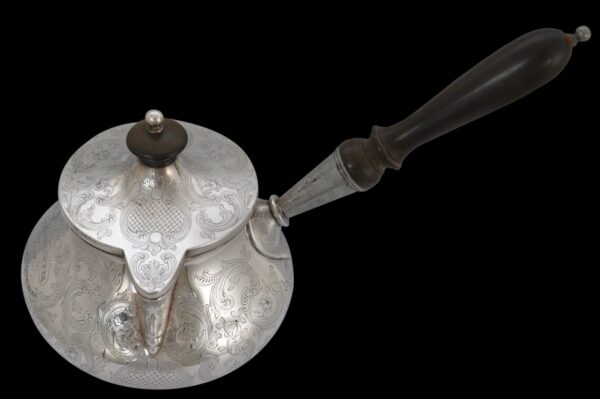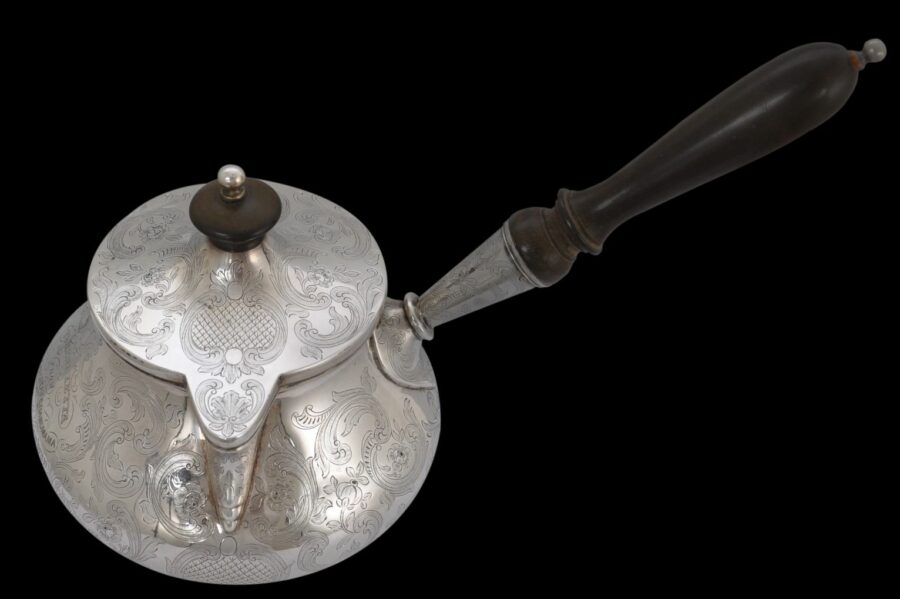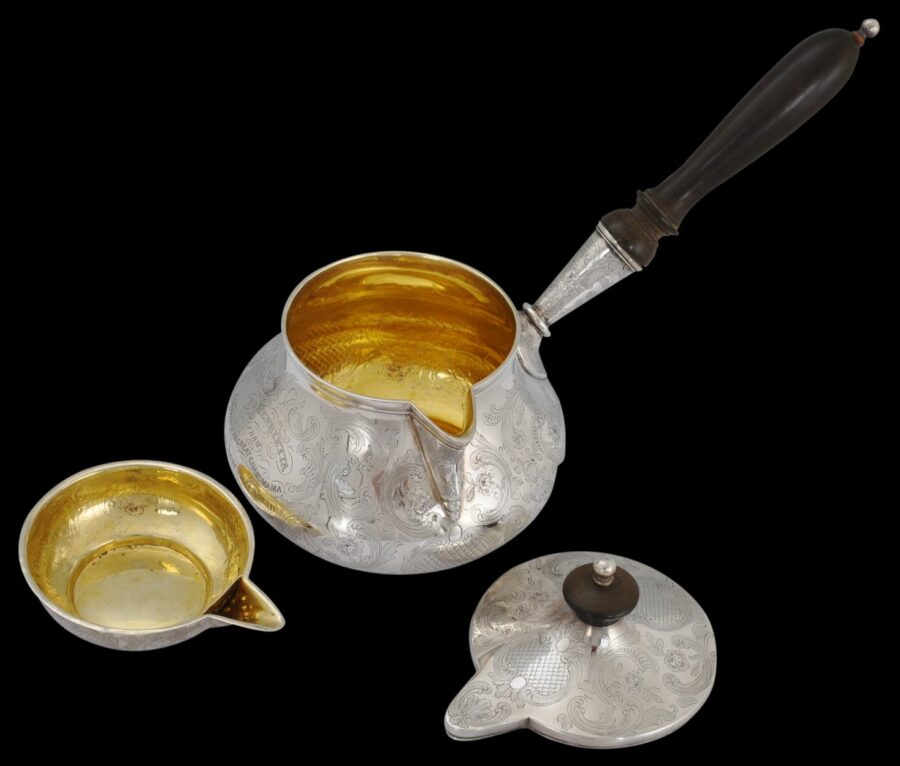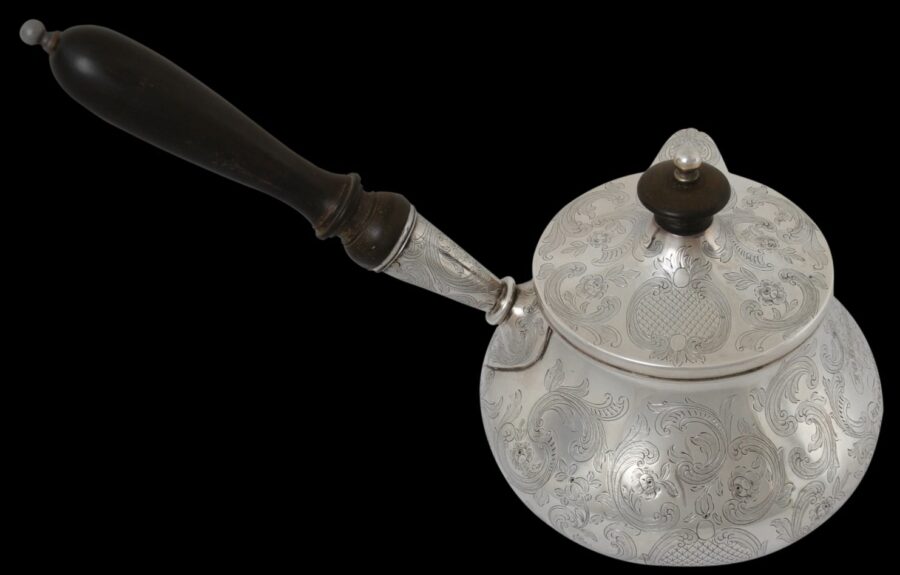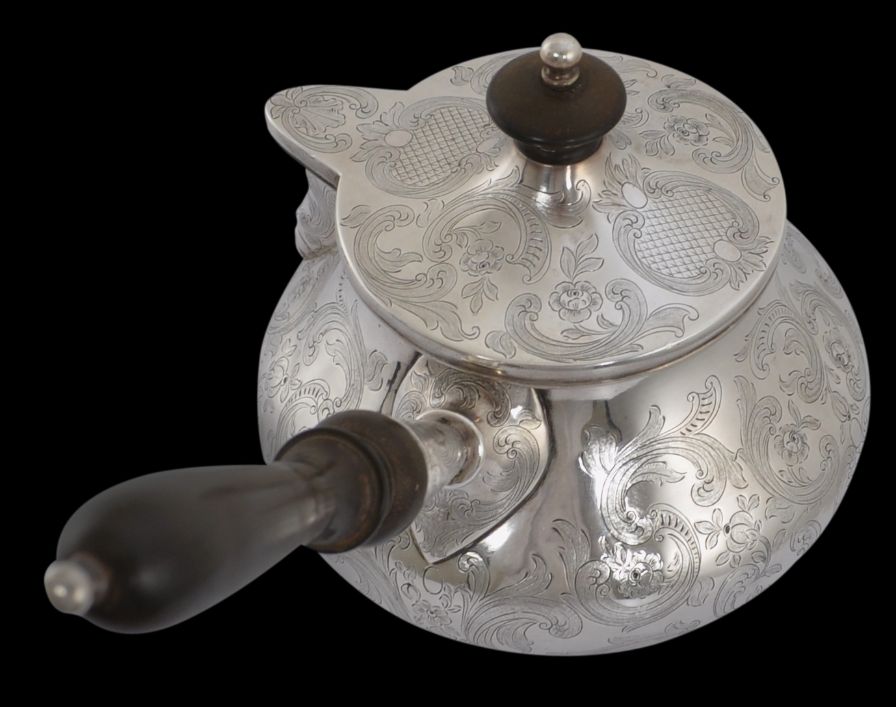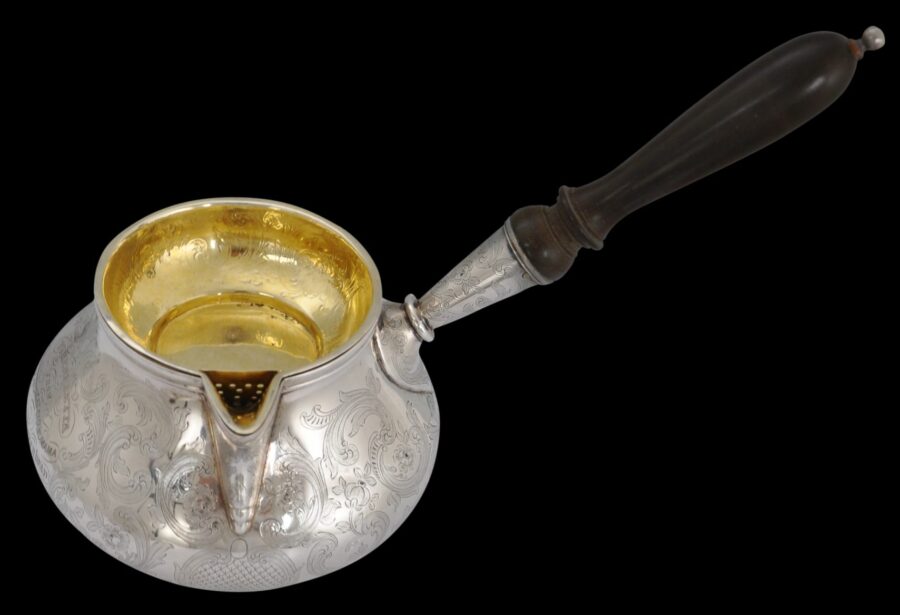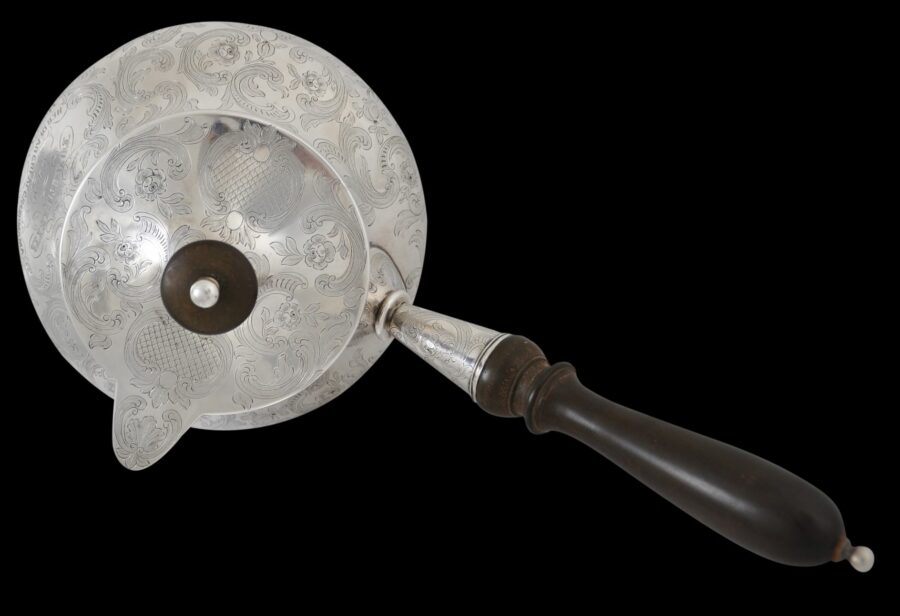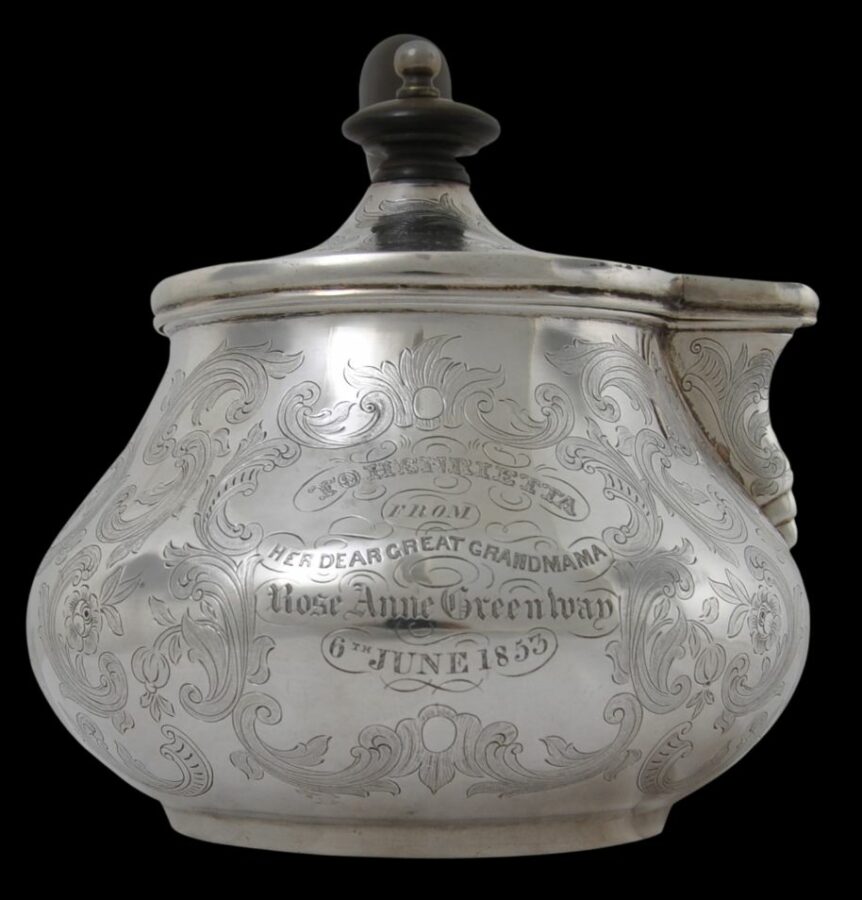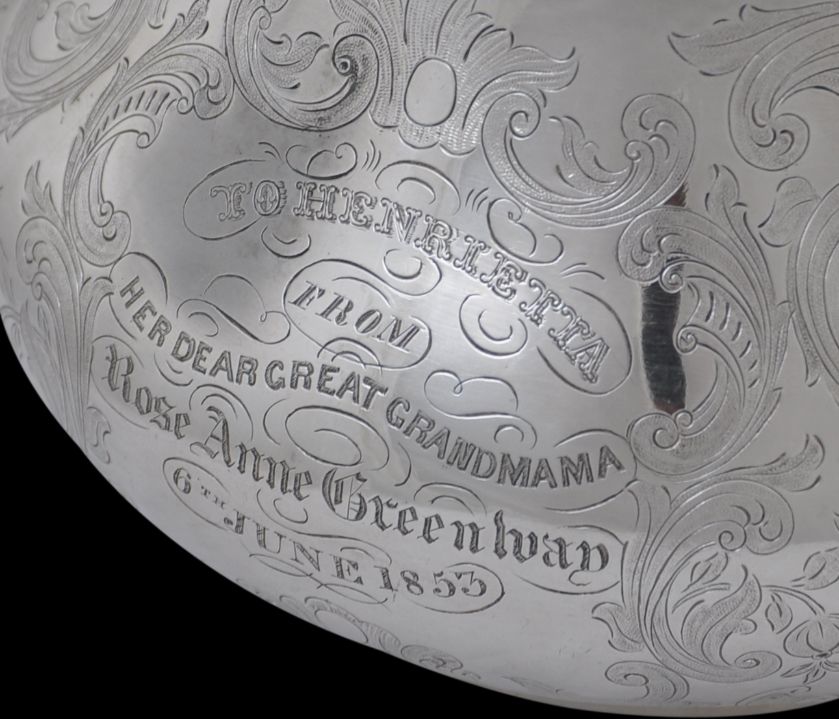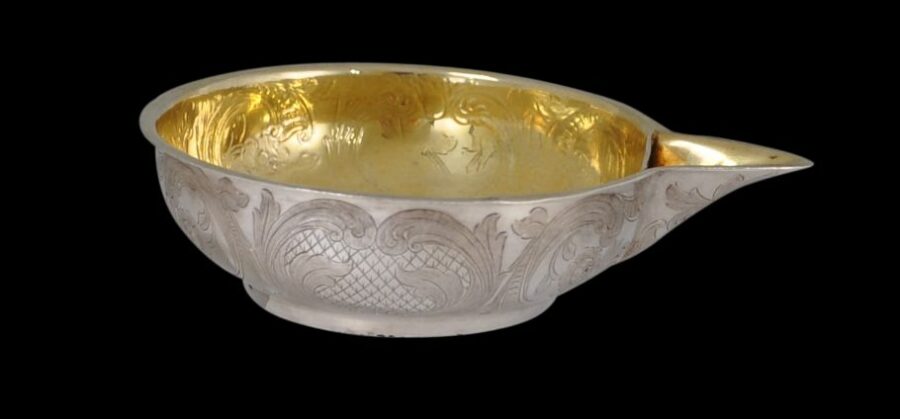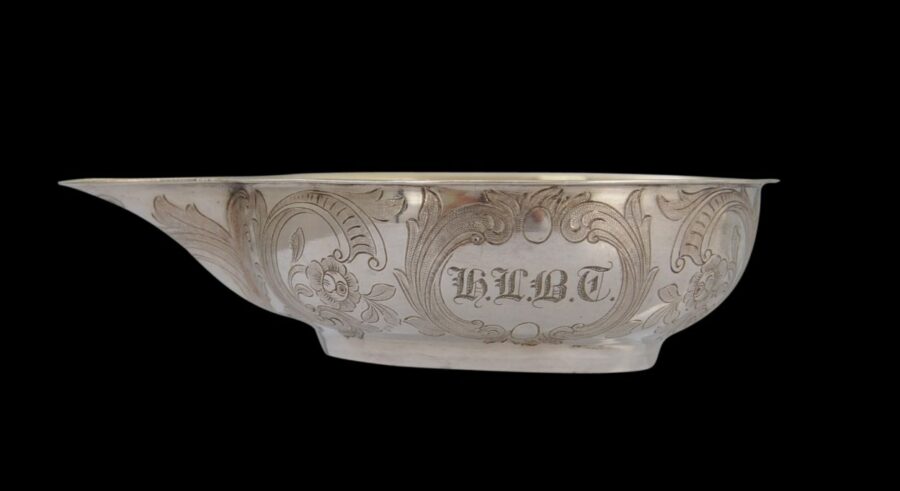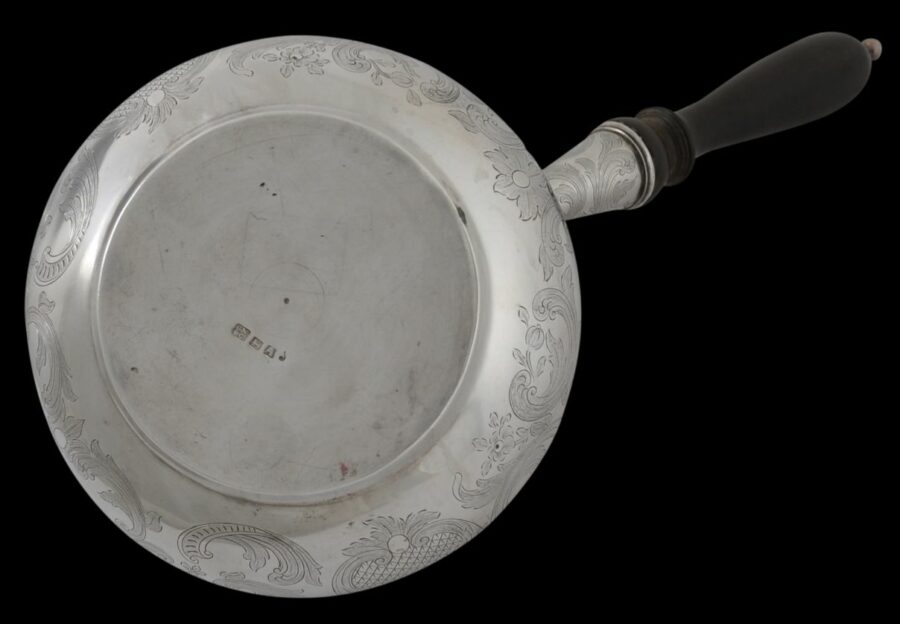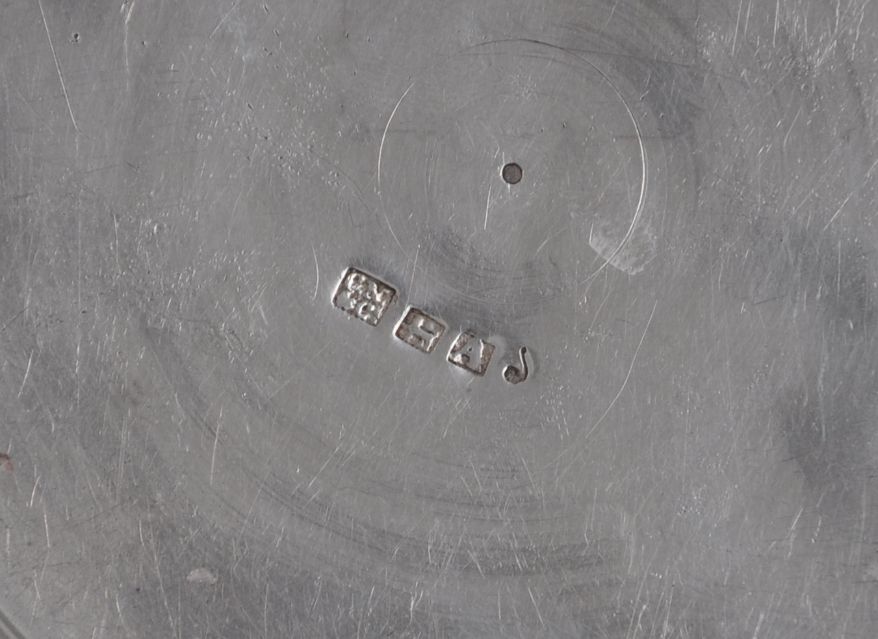Enquiry about object: 6726
Very Fine Colonial Inscribed, Dated & Engraved Silver & Gilt Brandy Warmer by Charles Nephew & Co. (with connections to the Siege of Cawnpore of the Indian Mutiny)
Calcutta, India circa 1850
length: approximately 24cm, width: 13.2cm, weight: 543g
Provenance
private collection, UK.
This large colonial brandy warmer by the colonial silversmithing firm Charles Nephew & Co, based in Old Court House Street, Calcutta, is an exceptional example. It has a pleasing shape and is very finely engraved all over with rococo-like scrolling. The interior is beautifully gilded. (These vessels generally are known as ‘brandy’ warmers but undoubtedly were used to heat all manner of beverages.)
Unusually, it also includes a pap boat which is as similarly finely engraved and has a gilded interior. (A pap boat is a small receptacle for feeding to infants and invalids). It is likely, and given that the inscription on the vessel suggests that it was for an infant, that this example would have been filled with hot water so that a small quantity of infant’s food in the pap could then be gently heated.
The lid fits tightly and is surmounted by a turned horn finial. The well-proportioned turned handle also is of horn.
The exterior is finely engraved with the following inscription:
‘To Henrietta / From her dear Great Grandma / Rose Anne Greenway / 6th June 1853’.
The dedication is important. Rose Anne Greenway was taken hostage at the Cawnpore Siege in 1857 along with many members of her family, and numerous other woman and children. She was forced to convey a message from the Nana Sahib to the garrison at Cawnpore demanding that they surrender. She and all the other hostages, mostly women and children, later were all slaughtered by the rebels forces.
The brandy warmer here is in pristine condition. It is free of dents or splits. The horn mounts are original and without chips or splits. It is a superb piece and is the best examples of a colonial warmer that we have seen.
A series of stamps to the base identify the work as being that of Charles Nephew & Co.
It comes from an important private UK collection.
The Massacre of Cawnpore
The Siege of Cawnpore (now Kanpur) was a notorious episode in the Indian rebellion of 1857.
Cawnpore was a major crossing point on the River Ganges, and so strategically important. In June 1857, during the Indian Mutiny (1857-1859), the Bengal Army sepoys stationed there rebelled, looted the treasury and laid siege to Major-General Sir Hugh Wheeler’s garrison. The besieged forces of the East India Company and civilians retreated to just outside the city.
On 25 June, the leader of the rebels, Nana Sahib, offered safe conduct to the River Ganges for the besieged group. Wheeler accepted, and two days later the Europeans marched towards the landing stage. As they embarked on the waiting vessels, a shot was heard. The Indian boatmen jumped overboard and made for the shore. The British immediately opened fire fearing that they had been set up. The Nana’s men returned fire and the boats were soon full of the dead and injured. Most of the sixty men who survived the initial exchange were then killed by the Nana’s troops. Most of the women and children survived the attack – about 120 in all – and were kept as hostages in the days that followed. However, they were killed in another, far more notorious massacre, the Bibighar Massacre, along with other women and children who had been captured directly from Cawnpore. The victims were thrown down a well in an attempt by the Indian rebels to hide the evidence. It is believed that Rose Anne Greenway was among the dead. The massacre was the worst atrocity against the British in the whole Uprising and greatly hardened opinion in London (Dalrymple, 2006, p. 303).
When the Company forces discovered what had been done, they engaged in widespread retaliation against captured rebels and local civilians, further embittering both sides.
References
Dalrymple, W., The Last Mughal: The Fall of a Dynasty, Delhi, 1857, Bloomsbury, 2006.
Wilkinson, W.R.T, Indian Colonial Silver: European Silversmiths in India (1790-1860) and their Marks, Argent Press, 1973.


